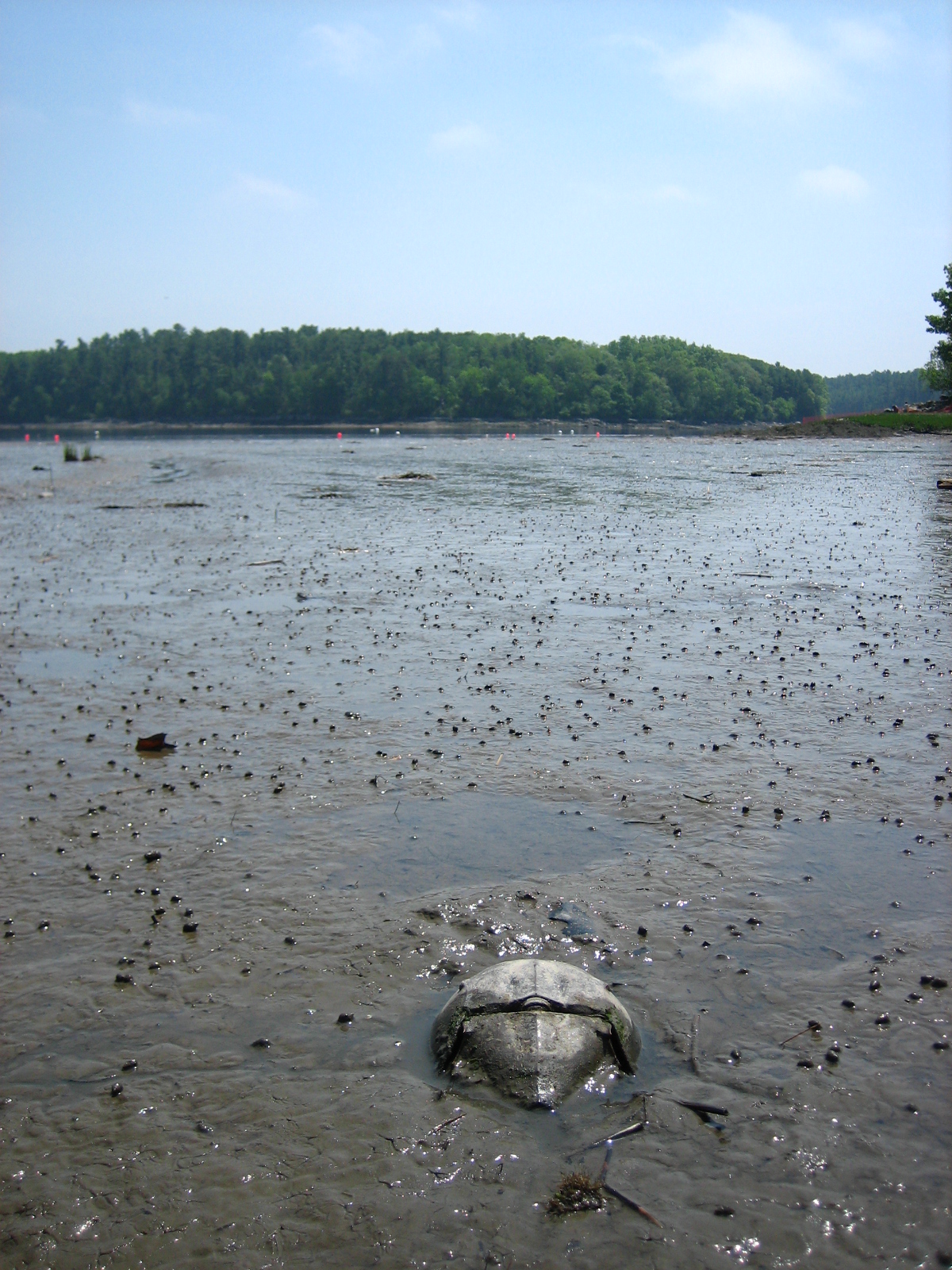Horseshoe Crab
The American Horseshoe Crab, Limulus polyphemus
The Chabot lab has been collaborating with the Watson Lab (UNH) for over a decade and we have been conducting research on the ecology, physiology and behavior of the American Horseshoe Crab, Limulus polyphemus. Horseshoe crabs first appeared in the fossil record about 450 million years ago and their body plan has remained virtually unchanged since then. This species currently plays important ecological, medical and commercial roles. They are considered to be a keystone species, their blood is used as the most sensitive assay for detecting the presence of disease-causing bacteria, and they are used for bait in the eel and conch fisheries. Unfortunately, horseshoe crabs, like many other marine creatures, may be in decline. Our labs have been addressing key issues associated with the timing of behavior and physiological changes in both the lab and in the field (Chabot and Watson, 2010).
We are interested in both endogenous and exogenous (environmental) control of behavior in Limulus. For many years Limulus was thought to be primarily nocturnally active based in part on field studies and on the excellent work of Bob Barlow and his colleagues showing clear circadian control of electroretinograms (ERGs) in this species. Barlow showed that the eyes of Limulus exhibit very large (>100,000X) increases in sensitivity. Importantly, these changes were shown to be controlled by a circadian clock located in the brain. However, our recent studies (Chabot et al., 2004) have shown that locomotor activity is rarely confined to the night. We have also shown that this species exhibits robust circatidal activity rhythms that are endogenously controlled (Chabot et al., 2007) and that this activity is controlled by a separate clock (Watson et al., 2008). While we often investigate the control of these behaviors in the laboratory (where we can better control conditions), we have also had great success tracking these animals in the natural environment (Schaller et al., 2010) where behavior can be expressed more naturally in response the entire suite of available cues. Please see the above tabs for additional results and studies.
